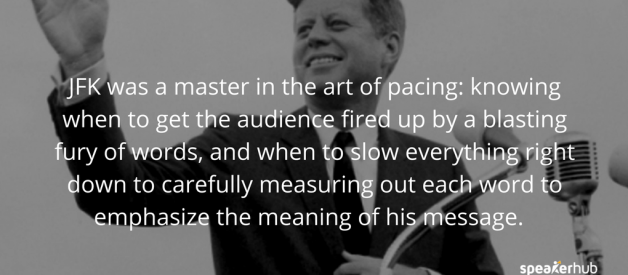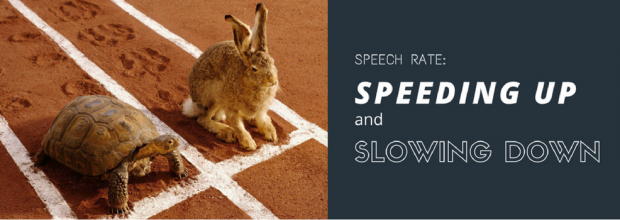
John F. Kennedy talked fast, very fast. He is in the Guinness Book of World Records for rate of speaking. During a speech in 1961, he spoke 327 words in just one minute. That?s about 3 times faster than the normal conversation rate.
During JFK?s inaugural address, however, he remarkably slowed down his speaking rate to a 96.5 words per minute, the slowest in the past 60 years of inauguration speeches.
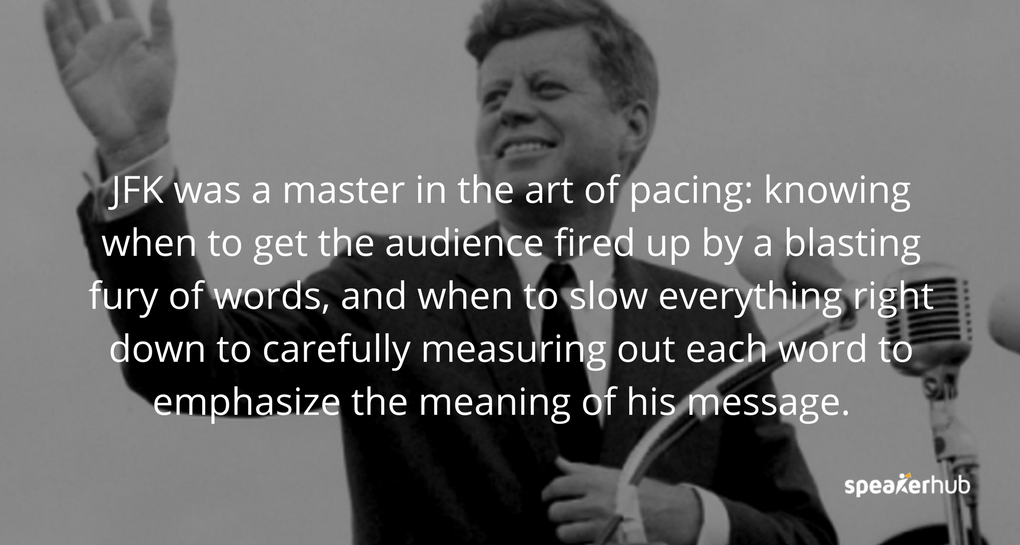
JFK was a master in the art of pacing: knowing when to get the audience fired up by a blasting fury of words, and when to slow everything right down to carefully measuring out each word to emphasize the meaning of his message.
As a speaker, the art of pacing can be one of your greatest tools.
Too fast or too slow?
The ultimate goal is to speak at a conversational pace. Do not attempt to speak in a completely steady pace, measuring out every word evenly: this could come off as monotone and boring.The combination of slow, fast, and medium speed makes your speech more engaging.
When to change your speed:
- Fast: indication of passion, urgency, excitement, and emotion.
- Slow: indication of importance, sadness, confusion, the seriousness of a point or the introduction of new ideas (use to help the audience grasp what you are saying)
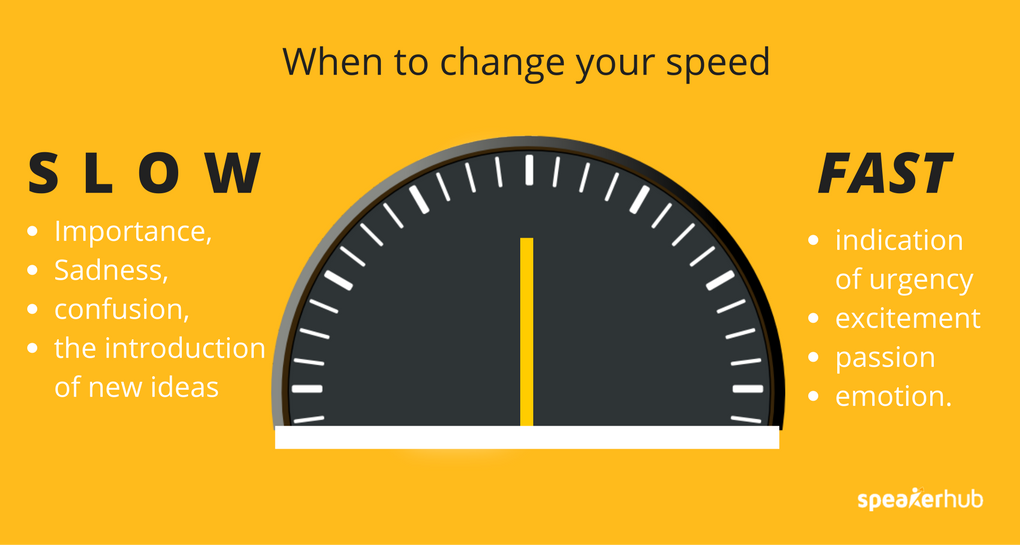
When you?re speaking quickly, initially it is exciting for the audience, but after a minute or two, it stops being stimulating and becomes overwhelming.
When you are speaking slowly, it can grab the attention of the audience and help them process every word, but an entire talk at a slow pace will bore your audience: while waiting for you to get to the point they will lose interest.
Mix it up! Keep the majority of your talk in the ordinary conversation range, then change your pace to emphasize points in your message and influence the emotions of your audience.
Speech rate guidelines
How can you tell if you are speaking too fast, or too slow?
While in your head you might think your pace is perfect, in reality, you might be off the mark.
This is where finding out your speech rates can be helpful.
Speech rate is simply the speed at which you speak. It?s calculated in the number of words spoken in a minute (wpm.)
Speech rate guidelines:
- Slow: less than 110 wpm
- Conversational: between 120 wpm and 150 wpm.
- Fast: more than 160 wpm
- Radio hosts and podcasters speak at 150?160 wpm.
- Auctioneers and commentators speak between 250 to 400 wpm.
Still having a difficult time imagining these speeds? We?ve pulled together a list of 7 TED Talks with varying speeds, to help you get better idea of the effect it can have on your presentation.
Examples of speeds:
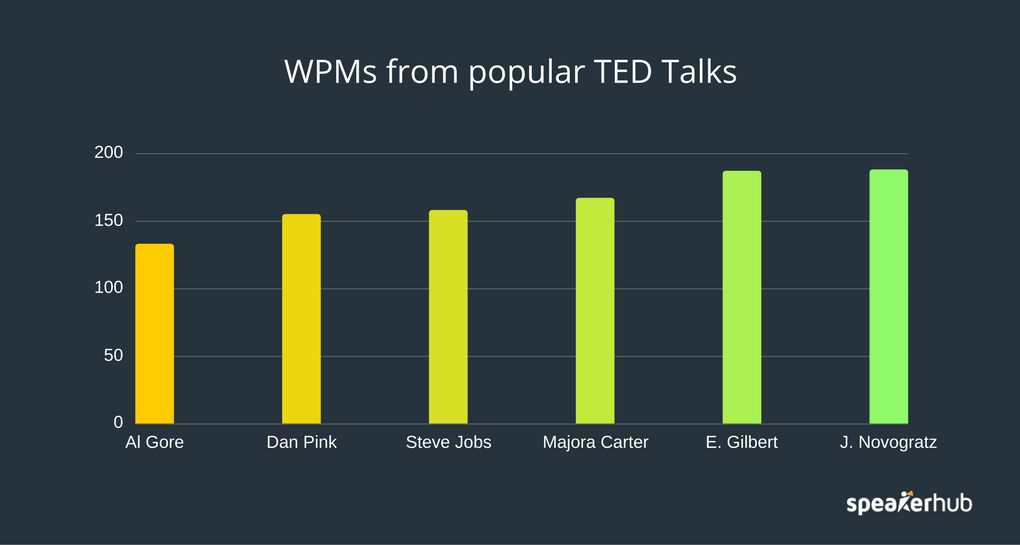
Martin Luther King Jr., Steve Jobs, Barack Obama, and Amy Tan are all examples of fantastic (and well-paced) speakers, give them a listen to see what a well-paced speaker sounds like.
Do you need to adjust your speech rate? The first step is to figure out how fast you speak. There are a number of methods you can use to figure out how fast you are speaking.
Finding your speech rate
One of the most straight forward ways of figuring out your speech rate is to count your words over a few minutes of talking.
Speaking Rate (wpm) = Total words / # of minutes
You can either record a few minutes of your talk with your smartphone (or any other recording device) or watch one of your own videos.
Top tip: If you use a mobile device, have it convert your speech to text. Talk for one minute to capture the text then cut and paste the text into a word counter.
Practicing
One of the best ways to get used to speaking at a slower or fast rate is to use a metronome to rehearse.
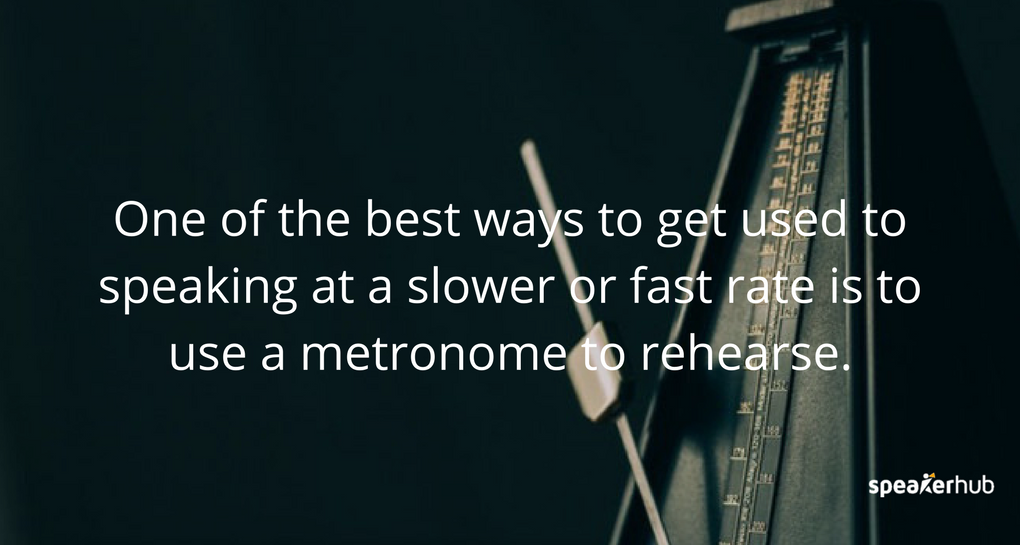
There are several free metronome apps available for Apple and Android which can help keep time as you practice your presentation. The click of the metronome can be set to your desired speech goal per minute. For instance, begin with 100 ticks per minute to get a feel for your pace, and adjust accordingly.
Want to practice your speed? Here are 2 smartphone apps that can help:
- Metronome Beats
Android | iOS
Metronome Beats has easy-to-use controls for increasing and decreasing the tempo in small increments. The visual beat indicators help you to keep track, and it is very easy to mute the metronome while visually monitoring your tempo.
- Pro Metronome
Android | iOS
Pro Metronome was created for all kinds of stage performers to improve their rhythm (think: musicians) but it is a fantastic app for public speakers who are working on their pacing. This has a wide variety of ways to keep your tempo, from our tempo screen color changes, to vibrations, to sounds.
You can also practice in front of someone, either a colleague or a presentation coach, and ask whether or not you are speaking too quickly or too slowly.
They can offer you feedback on where to pick up the speed, or slow it down to make a point more impactful.
What are some of your struggles when it comes to setting your pace? We would love to help you in one of our future articles. Please contact us here.
Are you looking for more speaking and training opportunities? SpeakerHub is the fastest growing network of speakers and trainers, connecting presenters with event organizers from around the world. Find out more here.
This was originally posted on the SpeakerHub blog.
